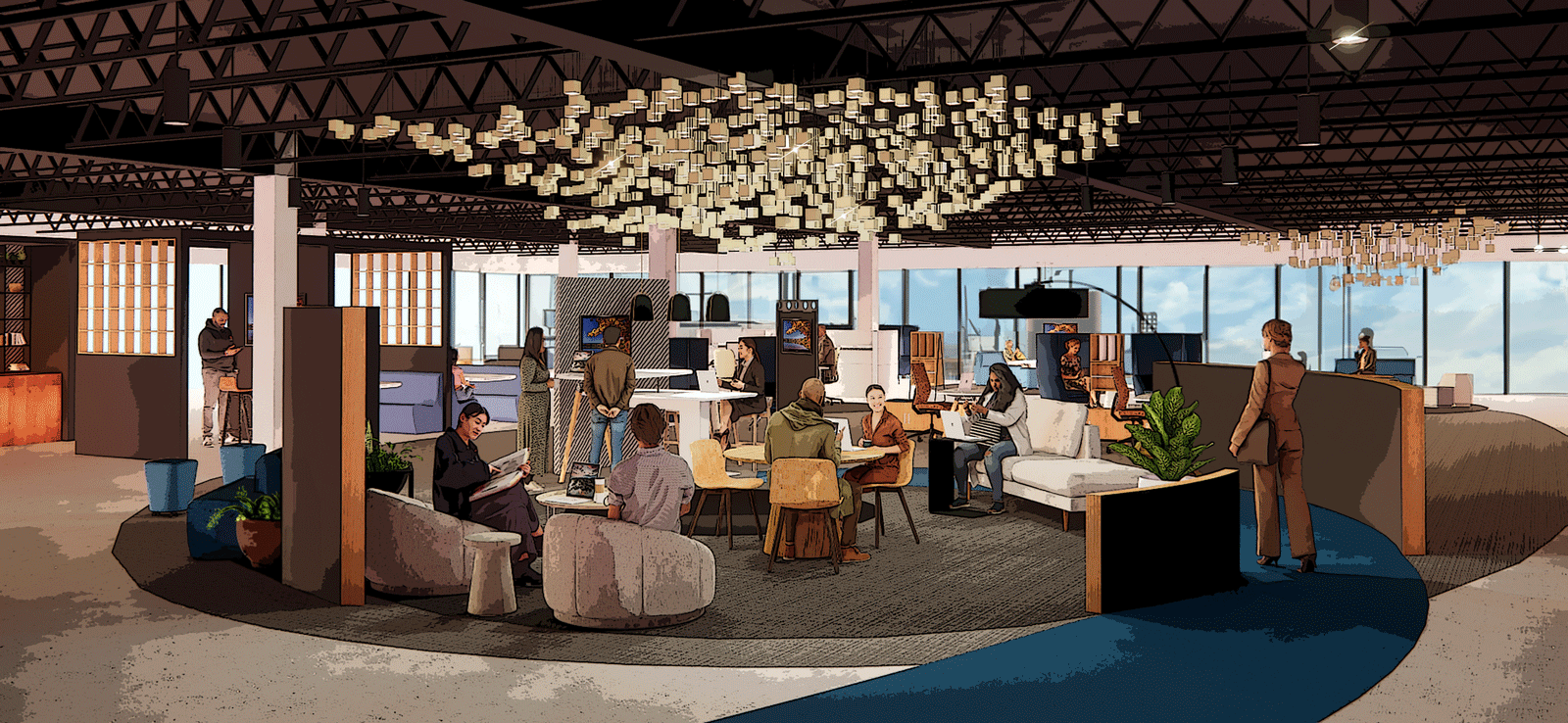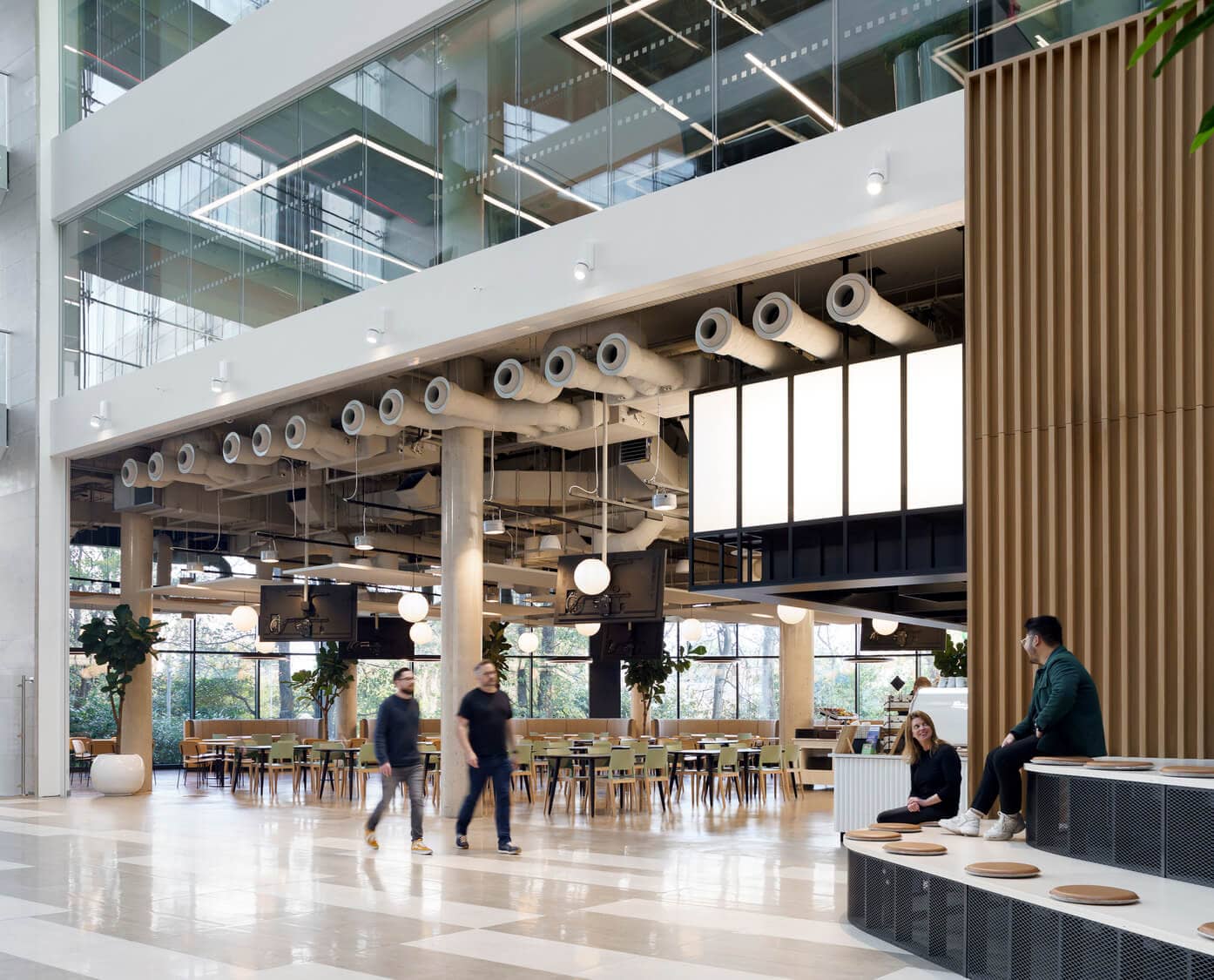
Old School, Old Desk
Born in an era of paper and typewriters, the traditional desk no longer meets the needs of the modern professional. To understand the future of desks, we must first look back to its birth.
In the 1600s, the British East India Company pioneered workspaces featuring rows of desks and chairs for clerks, much like the common floor plans seen today. Since then, desks of all shapes and sizes have driven commercial office layouts, especially with the advent of the telephone and computer.
Initially, desks served practical purposes, offering a surface for writing, storage for notes, staplers, and pens, and a place for personal items like family photos, awards, and Rolodexes. But where are these items now? In our pockets.
Smartphones often exceed the computing power and connectivity of computers, while laptops have become smaller and more portable. In an age characterized by spatial computing, agile needs, and unprecedented personalization, we must rethink what a ‘desk’ really means. For a growing number of workers, today’s desk, even in its variations, is a one-size-fits-all solution for a problem that no longer exists.
Desking in a Tasklounging Scenario
Tasklounging is the answer to the craving for a more comfortable and flexible work environment. It redefines workplace hospitality, providing a resort-like experience that emphasizes both ease and productivity
In a tasklounging setting, every seat can become a workspace, offering various design possibilities, including built-in or mobile soft seating with hidden casters for easy rearrangement. The focus is on facilitating relaxed productivity, allowing for comfortable, reclined postures. Technological features, such as discreetly positioned USB charging ports and wireless charging stations, enhance the connected experience.
However, tasklounging extends beyond the traditional office walls. This dynamic landscape calls for a more versatile workplace design that accommodates our complex, technology-driven lifestyles.
Virtual Desking and Spatial Computing
We should actively embrace our digitally leveraged future. For instance, the introduction of spatial computing by Apple Vision Pro enables us to engage with our work environment in entirely new ways, requiring only the flick of a fingertip to interact with our digital surfaces. Built-in cameras and tracking features offer new levels of interactivity, turning our ‘desk’ into an amorphous, intelligent, responsive entity. In this evolving landscape, our technology no longer demands a dedicated physical surface, allowing us to rethink ‘desks’ in an entirely new light.
For designers creating the workplaces of the future, a primary focus must be on seamless technology integration, turning the concept of the desk into an interactive hub of productivity and connectivity. Wireless charging capabilities should extend beyond a single desk pad, integrating into every possible surface to ensure employees can power their devices no matter where they work. Soft seating areas should surpass mere comfort, incorporating built-in power sources and USB connectivity to facilitate uninterrupted work. Wi-Fi hotspots should be strategically placed to guarantee consistent, high-speed internet access throughout the workspace. These elements must be carefully worked into the design process from the onset. The challenge lies in incorporating these tech features and, in a natural and intuitive manner, creating an ecosystem where technology enhances productivity without becoming intrusive. Designers must weave these technological threads into the very fabric of the workspace, ensuring a harmonious blend of form and function.
To Infinite Desking and Beyond
Soon, we’ll embrace the Infinite Desk, where any seat, surface, and environment, physical or digital, becomes a hub for our best work. This era liberates our minds to enhance team collaboration, marking a shift from video calls to dynamic, ever-present spatial collaboration.
For designers creating the future workplace, it’s vital to focus on integrating technology seamlessly. Infinite Desking does not eliminate traditional desking but regulates it in priority. Mini task lounges, collaborative spaces, and huddle areas create flexible “archipelagos” of work islands. Users navigate through these islands, adapting to their tasks and moods, from tech-intensive to tech-free.
The Infinite Desk future-proofs the workplace because it incorporates emerging productivity technology. It prepares for products like spatial computing hardware and digital wallcovering, offering adaptable work islands that laptops and phones can sit on the surface of until a combination of cloud and spatial computing replaces them over the next decade.
Discover more from reviewer4you.com
Subscribe to get the latest posts to your email.





